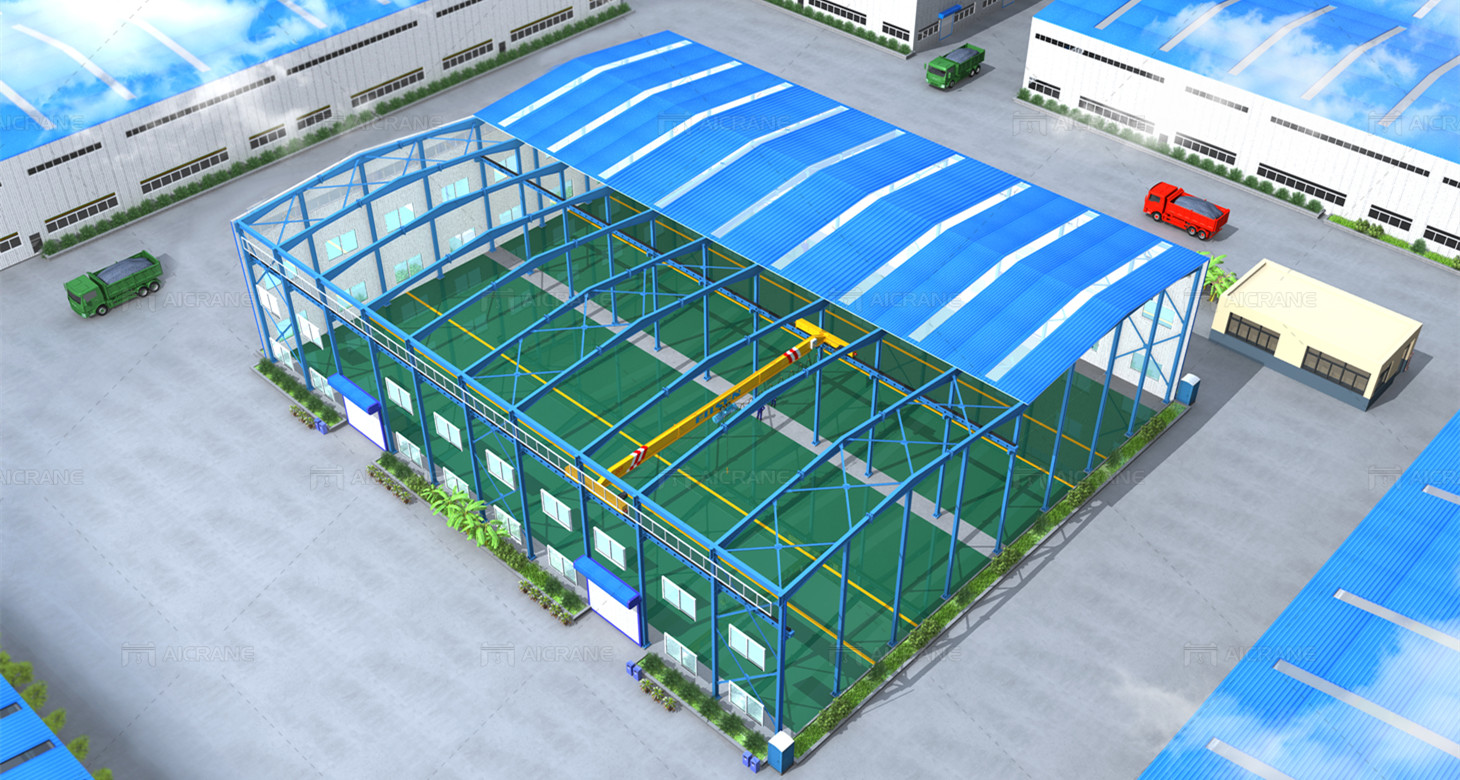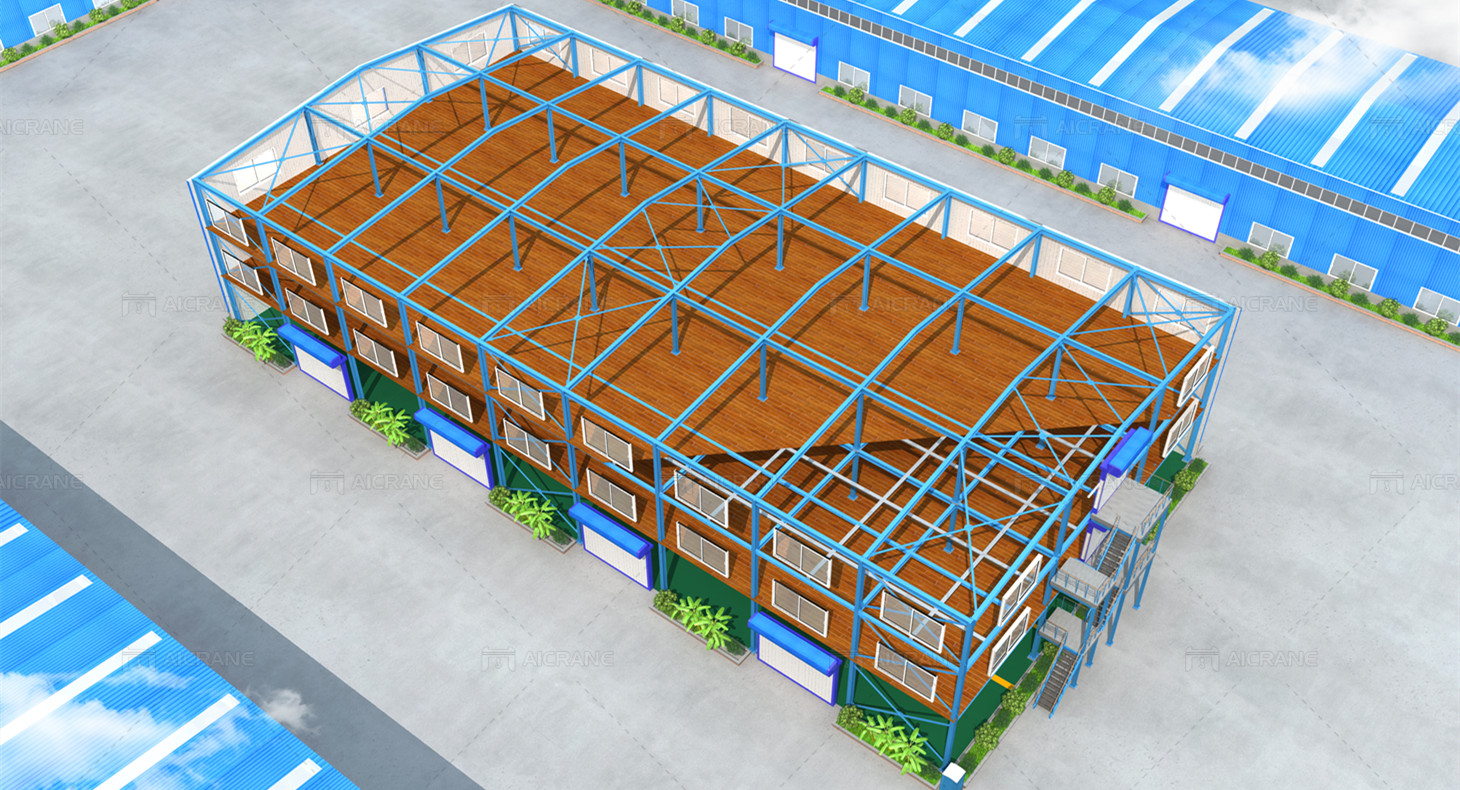Maintaining a steel structure factory is crucial to ensure its longevity, safety, and operational efficiency. Steel structures are renowned for their durability and resilience, but like any other infrastructure, they require regular upkeep to prevent corrosion, structural degradation, and functional issues. In this guide, we explore the essential steps and best practices for maintaining a steel structure factory, covering everything from inspection and cleaning to structural repairs and corrosion prevention.

Regular Inspection
The foundation of effective maintenance is regular inspection of the steel structure factory. Conduct comprehensive visual inspections at least once a year, focusing on key areas such as:
Structural components: Check for signs of corrosion, rust, cracks, or deformation in columns, beams, braces, and connections.
Roofing and cladding: Inspect for leaks, loose or damaged panels, and deterioration of protective coatings.
Doors, windows, and openings: Ensure proper functioning, weather sealing, and security of access points.
Electrical and mechanical systems: Evaluate the condition of lighting, HVAC systems, conveyor belts, and other equipment for signs of wear or malfunction.
Safety features: Verify the integrity of fire suppression systems, emergency exits, signage, and safety barriers.
Document findings and prioritize repairs or maintenance tasks based on severity and criticality to address issues promptly.
Cleaning and Surface Maintenance
Maintaining clean surfaces is essential for preventing the buildup of dirt, debris, and contaminants that can contribute to corrosion and deterioration. Regularly clean exterior surfaces, including roofing, walls, and structural components, using mild detergent solutions and soft brushes or pressure washers. Pay particular attention to areas prone to moisture accumulation, such as gutters, downspouts, and joints, to prevent water ingress and corrosion. Remove vegetation, moss, and other organic growths from surfaces to prevent damage and maintain aesthetics.
Inspect and clean interior spaces, including floors, walls, and equipment, to prevent dust accumulation, improve hygiene, and ensure optimal working conditions. Implement regular maintenance schedules for HVAC systems, ventilation ducts, and exhaust fans to maintain indoor air quality and prevent contamination.
Corrosion Prevention and Protection
Corrosion is a primary concern for steel structures, especially in industrial environments where exposure to moisture, chemicals, and pollutants is prevalent. Implement proactive measures to prevent corrosion and protect steel components, including:
Applying corrosion-resistant coatings: Use high-quality primers, paints, and protective coatings specifically designed for steel structures to provide a barrier against moisture and corrosive agents. Conduct periodic inspections and touch-up applications to maintain coating integrity and effectiveness.
Galvanizing: Consider galvanizing steel components by hot-dip or electroplating processes to apply a zinc coating that provides superior corrosion protection, especially in aggressive environments such as coastal areas or chemical processing plants.
Cathodic protection: Install sacrificial anode systems or impressed current cathodic protection systems to control corrosion by providing a constant electrical current that inhibits the oxidation of steel surfaces.
Corrosion inhibitors: Use corrosion inhibiting compounds or coatings containing chemicals such as rust converters, phosphates, or silicates to create a protective barrier on steel surfaces and mitigate corrosion.
Regularly inspect coated surfaces for signs of damage, delamination, or degradation, and take prompt corrective actions to maintain corrosion protection.

Structural Repairs and Maintenance
Addressing structural issues promptly is essential to prevent safety hazards and structural failures in the steel structure factory. Engage qualified structural engineers or contractors to assess and repair the following:
Weld defects: Inspect welded connections for cracks, discontinuities, or inadequate fusion, and repair or reinforce as necessary to ensure structural integrity.
Corrosion damage: Remove corroded sections or components, and replace with new materials or repair using approved methods such as patching, welding, or mechanical fastening.
Fatigue cracks: Monitor high-stress areas for fatigue cracking and implement reinforcement measures such as installing stiffeners, braces, or additional support members to redistribute loads and prevent further propagation.
Foundation settlement: Monitor and address signs of foundation settlement, uneven settlement, or soil erosion around the structure to prevent structural distortion or instability.
Implement a proactive maintenance program that includes periodic structural assessments, non-destructive testing, and condition monitoring to identify issues early and prevent costly repairs or replacements.
Safety and Compliance
Maintaining a safe working environment is paramount in a steel structure workshop to protect employees, visitors, and assets from accidents and injuries. Adhere to relevant safety standards, codes, and regulations governing industrial facilities, and implement the following measures:
Regular safety inspections: Conduct routine safety inspections of equipment, machinery, walkways, and storage areas to identify hazards, ensure compliance with safety regulations, and mitigate risks.
Employee training and awareness: Provide comprehensive training programs for employees on safety protocols, emergency procedures, and hazard recognition to promote a culture of safety and accountability.
Safety equipment and signage: Install appropriate safety equipment such as guardrails, handrails, safety harnesses, and personal protective equipment (PPE), and prominently display safety signage, warnings, and emergency evacuation routes throughout the facility.
Regularly review and update safety policies and procedures, conduct safety drills and training sessions, and encourage employee participation in safety initiatives to maintain a safe and secure working environment.
Effective maintenance of a steel structure factory requires a proactive approach, comprehensive planning, and diligent execution of maintenance tasks. By implementing regular inspections, cleaning and surface maintenance, corrosion prevention measures, structural repairs, and safety protocols, stakeholders can ensure the longevity, safety, and operational efficiency of the facility. Invest in qualified personnel, resources, and technologies to establish a robust maintenance program tailored to the specific needs and challenges of the steel structure factory, and prioritize proactive measures to prevent issues before they escalate. By prioritizing maintenance, stakeholders can maximize the value and performance of their steel structure factory for years to come. Get more information from your manufacturer.